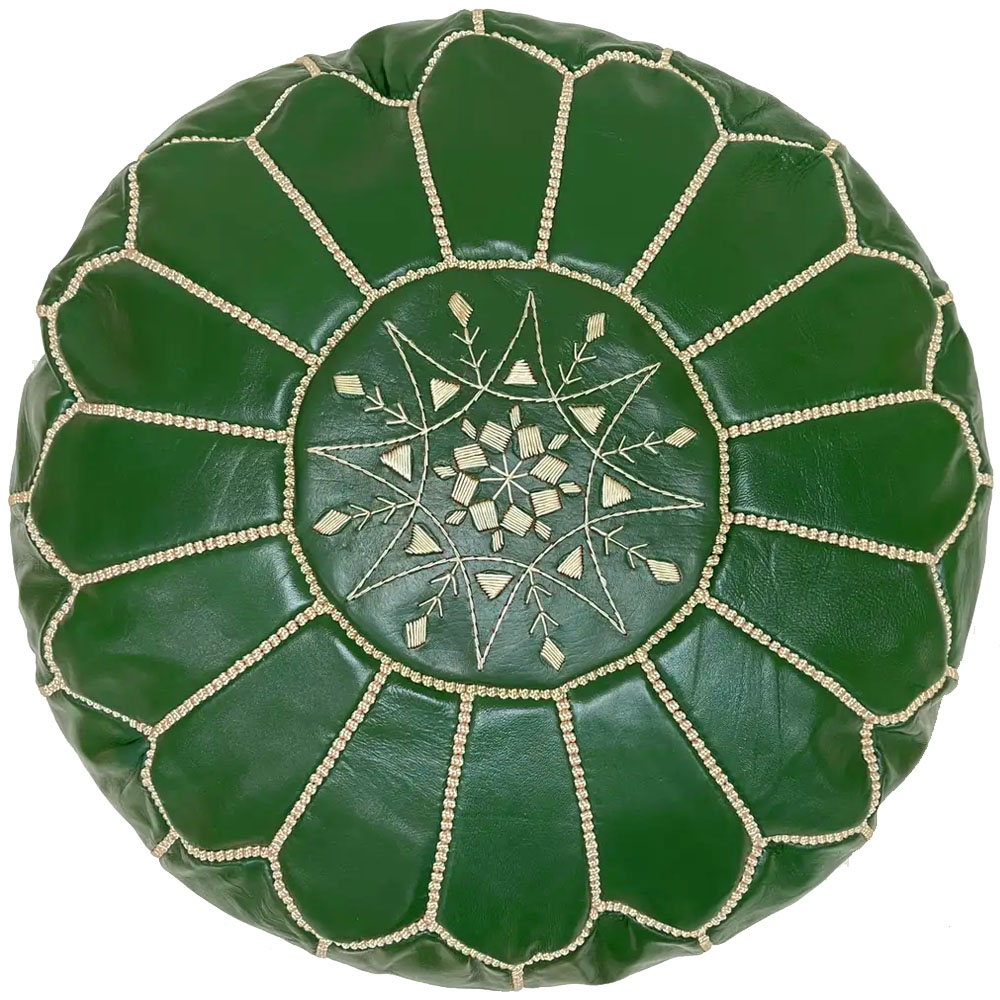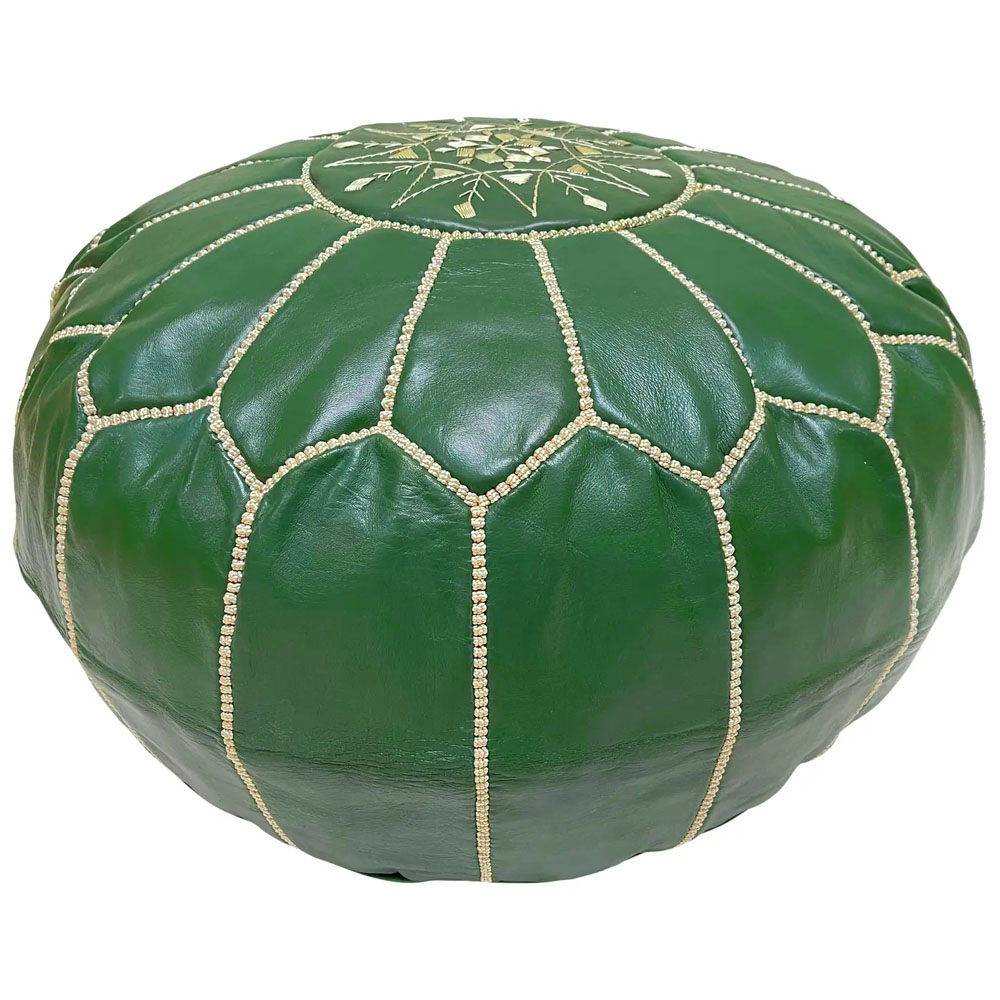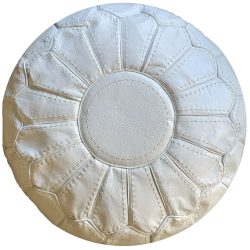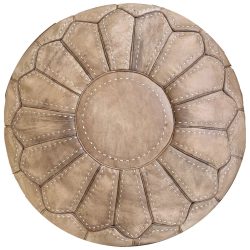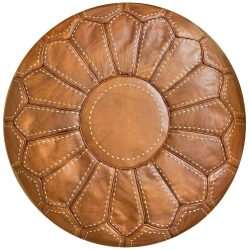Description
Green Leather Moroccan Pouf
Since these poufs are, tanned, handmade and hand-stitched using traditional
Moroccan methods they may have slight variations in color or pattern which
adds to the beauty of handmade items. The pouf has a zip-up fastening underneath
and comes un-stuffed. Can be packed with a range of suitable fillings cotton
fiber, flame retardant wool, shredded foam, foam chips, coir, textile scraps, etc.
These versatile poufs will add style, elegance, texture, and color to any interior
decor modern or traditional use as a footstool, seating, a table, scatter in a penthouse
apartment, cozy up by a log fire in a country cottage, or for Indian summers outdoor
dining, group them around the pool for luxury poolside gatherings.
See the complete Moroccan Leather Pouf colour range
Moroccan leather
(also known as Levant, the French Maroquin, or German Saffian from Safi, a Moroccan town famous for leather)
is a soft, pliable form of leather widely used for gloves and the uppers of ladies’ shoes and men’s low cut shoes,
but traditionally associated with bookbindings, wallets, linings for fine luggage, and the like.
Originally Morocco leather was imported to Europe from Morocco,
and from the late 16th century it was valued in luxury book-bindings in Western
countries because of its strength and because it showed off the gilding.
It was also used in the Islamic world from an earlier date.
However Morocco was often not the original source of the leather.
Some of the highest quality Morocco leather, usually goat skin,
used in book binding was sourced from Northern Nigeria.
The leather tends to be more famous than the breed of goat that originally produced it.
The leather is sourced from the Sokoto Red breed,
which is indigenous to Guinea and Sudan Savannah of Nigeria and Maradi Region in Republic of Niger.
The finest grades of Morocco leather are goatskin,
but by the late 19th century other skins often were substituted in practice, particularly sheepskin and split calfskin.
For example, French Morocco is a variety made of sheepskin.
The tanning process varied widely, but the traditional tanning material was sumac.
The traditional tanning process was skilled and elaborate; according to the application,
the preparation either would aim for a carefully smoothed finish,
or would bring up the grain in various patterns such as straight-grained, pebble-grained, or in particular, in a bird’s-eye pattern.
Morocco leather is practically always dyed, traditionally most often red or black,
but green, brown or other colors also were available, and in modern times there is no special constraint on color.

